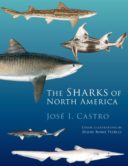Designer nature: mosquitoes first and then what?
We’re told that we can insert a gene to confer sterility and this trait would race like wildfire through Aedes aegypti. Why this species? Because it’s the vector of the Zika virus—along with the dengue and yellow fever viruses. The problem is that A. aegypti isn’t the only culprit. It’s just one of a dozen or more bloodsuckers that will also have to be wiped out. After we’ve driven these species to extinction, we’ll presumably move on to the Anopheles species that transmit malaria.






















